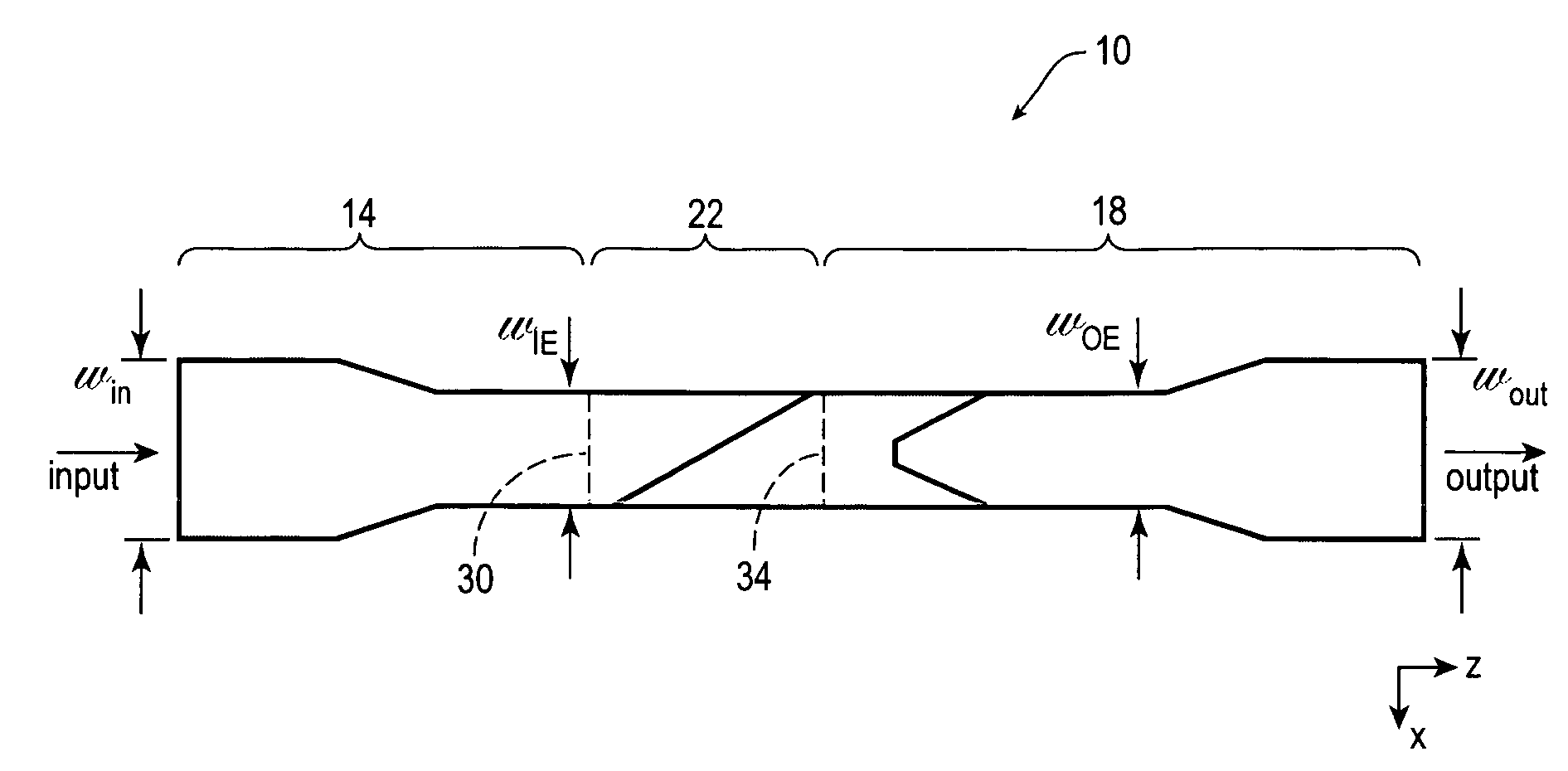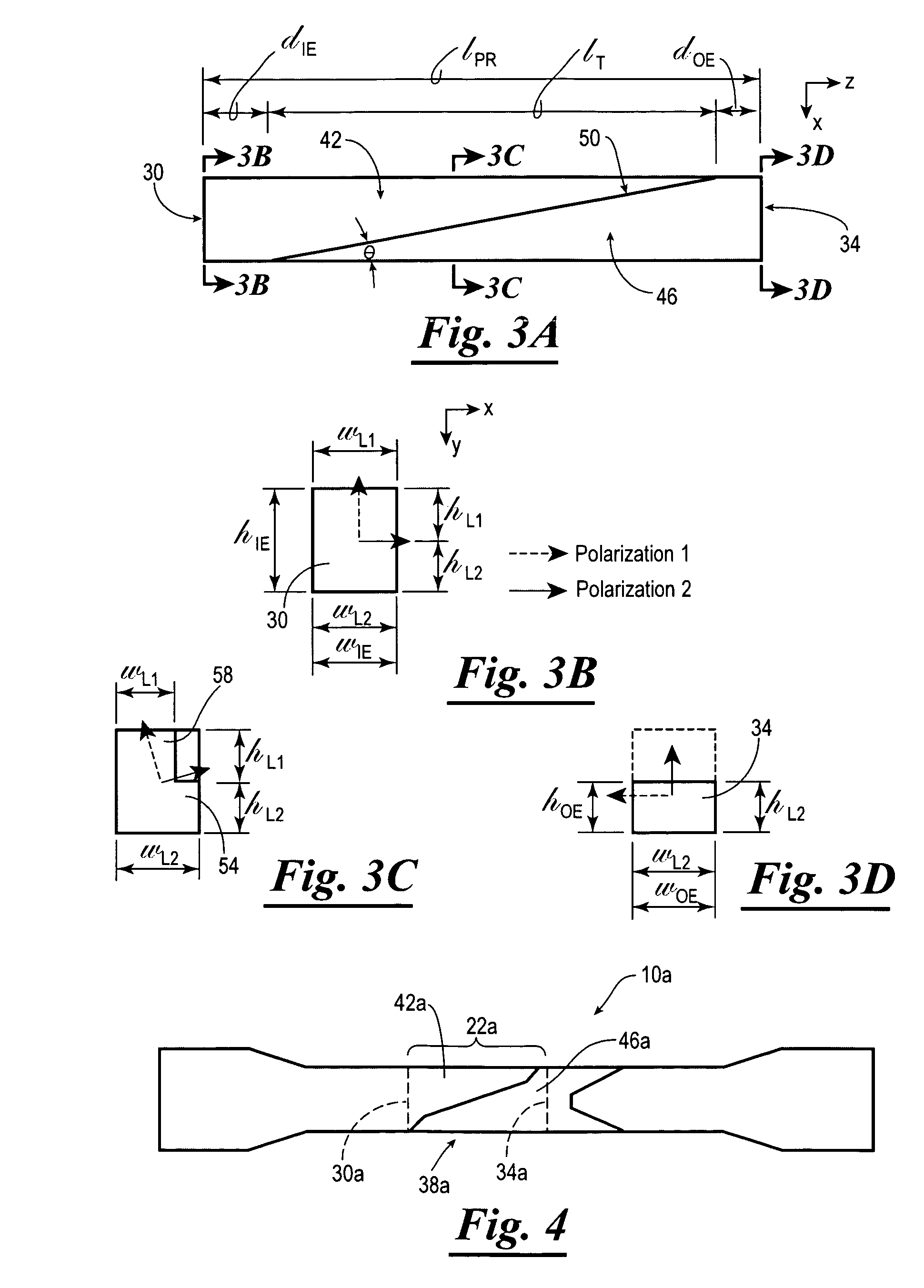Adiabatic polarization converter
a converter and adiabatic polarization technology, applied in the field ofadiabatic polarization converters, can solve the problems of extra components and/or costs, limiting the scope of their application,
- Summary
- Abstract
- Description
- Claims
- Application Information
AI Technical Summary
Benefits of technology
Problems solved by technology
Method used
Image
Examples
example 1
Design / Performance
[0072]The polarization rotator 22 with a geometry as shown in FIG. 9 was numerically simulated using a full vector Beam Propagation Method (FV-BPM). The nominal waveguide thickness for the simulation was about 1.5 μm, and the polarization inducing etch depth was about 750 nm. The waveguide core index was about 1.70, while the cladding surrounding the waveguide index was about 1.45. The taper length IT was a design parameter that was varied.
[0073]Shown in FIGS. 10A and 10B are computational models for the X-polarized (TE) mode at the input end 30 of the polarization rotator 22, and shown in FIGS. 10C and 10D are the computational models for the Y-polarized (TM) modes at the input end 30 of the polarization rotator 22 (where the waveguide structure 10 is 1.1 μm wide and 1.5 μm thick). Shown in FIG. 11A is the optical field evolution for the X-polarized (TE) mode for the structure of FIG. 9 for a taper length of IT=500 μm, and shown in FIG. 11B is the optical field ev...
example 2
Application
[0076]As discussed herein, the waveguide structure 10 of the present invention can be used in an integrated optical circuit having other waveguide elements. As one example application, the waveguide structure 10 can be integrated with a polarization beam splitter, such as the polarization beam splitter described in a co-pending patent application entitled “Integrated Optical Polarization Beam Splitter”, which is identified by U.S. Ser. No. 10 / 661,891; the entire content of which is hereby expressly incorporated herein by reference.
[0077]For example, the polarization beam splitter can be utilized to split the polarization of an incident optical beam or signal into two orthogonal optical signals, a TE mode signal and a TM mode signal. One of the TE mode signal or the TM mode signal can then be transmitted through the polarization rotator 22 of the present invention so that its polarization is rotated to match the polarization of the other signal, thereby providing a single ...
PUM
 Login to View More
Login to View More Abstract
Description
Claims
Application Information
 Login to View More
Login to View More - R&D
- Intellectual Property
- Life Sciences
- Materials
- Tech Scout
- Unparalleled Data Quality
- Higher Quality Content
- 60% Fewer Hallucinations
Browse by: Latest US Patents, China's latest patents, Technical Efficacy Thesaurus, Application Domain, Technology Topic, Popular Technical Reports.
© 2025 PatSnap. All rights reserved.Legal|Privacy policy|Modern Slavery Act Transparency Statement|Sitemap|About US| Contact US: help@patsnap.com



